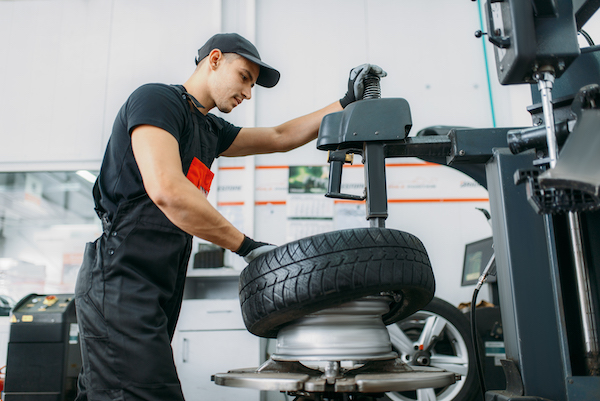Save Big with Mopar Tire Service Specials in Morris: Limited Time Uses
Save Big with Mopar Tire Service Specials in Morris: Limited Time Uses
Blog Article
Tire Service: Understanding Tire Stress Monitoring Solutions
Comprehending Tire Stress Surveillance Systems (TPMS) is an essential facet of preserving ideal automobile efficiency and safety on the road. With advancements in vehicle innovation, TPMS has actually ended up being a standard attribute in contemporary vehicles, offering real-time info on tire stress levels. Digging much deeper into the complexities of TPMS, one can discover the numerous parts that make up this system and the significance of each in making sure exact tracking. From straight to indirect TPMS systems, the landscape of tire pressure monitoring varies, each with its special collection of considerations and benefits. Keep tuned to unravel the intricacies of TPMS, from maintenance tips to the obvious benefits of keeping your tires properly inflated. tire shop morris.

Significance of TPMS
The value of Tire Stress Monitoring Solutions (TPMS) depends on their capability to enhance automobile security and performance via real-time tracking of tire pressure levels. Keeping the appropriate tire pressure is crucial for ensuring optimum handling, braking, and overall safety and security of an automobile. TPMS provides vehicle drivers with instant feedback on any underinflated or overinflated tires, allowing for prompt modifications to be made.
Components of TPMS
Comprising numerous important aspects, a Tire Stress Surveillance System (TPMS) functions as an advanced safety and security attribute in modern cars. The primary elements of a TPMS consist of sensing units, a control component, and a caution indication. Sensors are commonly located in the tire shutoff stem or affixed to the wheel setting up, where they determine tire stress and transfer data to the control module. If it finds dramatically reduced stress in any of the tires, the control component procedures this info and triggers a caution. The caution indication, commonly a symbol on the control panel, signals the vehicle driver to examine the damaged tire or tires. Some progressed TPMS designs likewise display the actual tire stress analyses for every tire, supplying drivers with real-time details to make sure optimal tire efficiency and safety and security. By monitoring tire pressure constantly, TPMS helps avoid mishaps, reduces tire wear, and improves gas performance, making it a vital element for vehicle safety and security and efficiency.
Kinds Of TPMS

On the various other hand, indirect TPMS relies on the car's wheel speed sensors to check tire stress. This system spots underinflation by contrasting the rotational speeds of the wheels. Indirect TPMS is less costly than direct TPMS, as it uses existing sensing units within the vehicle.
While direct TPMS supplies much more precise readings, indirect TPMS is simpler in layout and normally anonymous needs less upkeep. Both systems have their benefits and limitations, and the choice in between them commonly depends upon elements such as price, lorry make, and personal choice. Understanding the distinctions between these two types of TPMS can help vehicle proprietors make educated choices relating to tire maintenance and safety.
TPMS Maintenance Tips
Conduct routine checks on the tire pressure degrees and contrast them with the TPMS analyses to ensure they are consistent. During tire rotation or replacement, make sure that the TPMS components are managed carefully to prevent any potential damages. If the TPMS cautioning light illuminates on the control panel, deal with the concern immediately by checking the tire stress and the overall system for any kind of mistakes.
Advantages of Correct Tire Stress
Maintaining appropriate tire stress, as emphasized in TPMS Upkeep Tips, is essential for enjoying the countless benefits connected with optimum tire pressure levels. In addition, correct tire pressure makes sure also tire wear, extending the lifespan of the tires and advertising much safer driving conditions. In conclusion, the benefits of correct tire stress go past just tire longevity; they include look at more info boosted fuel performance, boosted safety, much better automobile performance, and overall driving convenience.
Conclusion
Finally, comprehending tire stress monitoring systems (TPMS) is vital for keeping optimum tire stress and guaranteeing visite site automobile security. By identifying the relevance of TPMS, knowing with its parts, understanding the different types available, adhering to proper maintenance pointers, and understanding the advantages of keeping correct tire stress, motorists can boost their driving experience and extend the life expectancy of their tires. Appropriate tire pressure is essential to risk-free and efficient lorry procedure.

Report this page